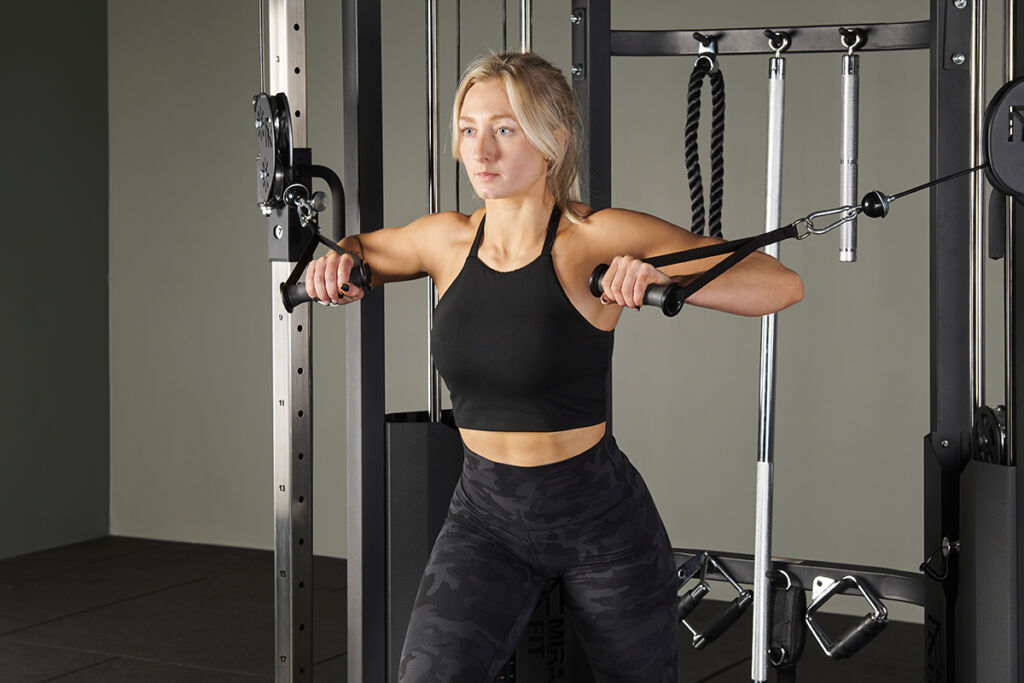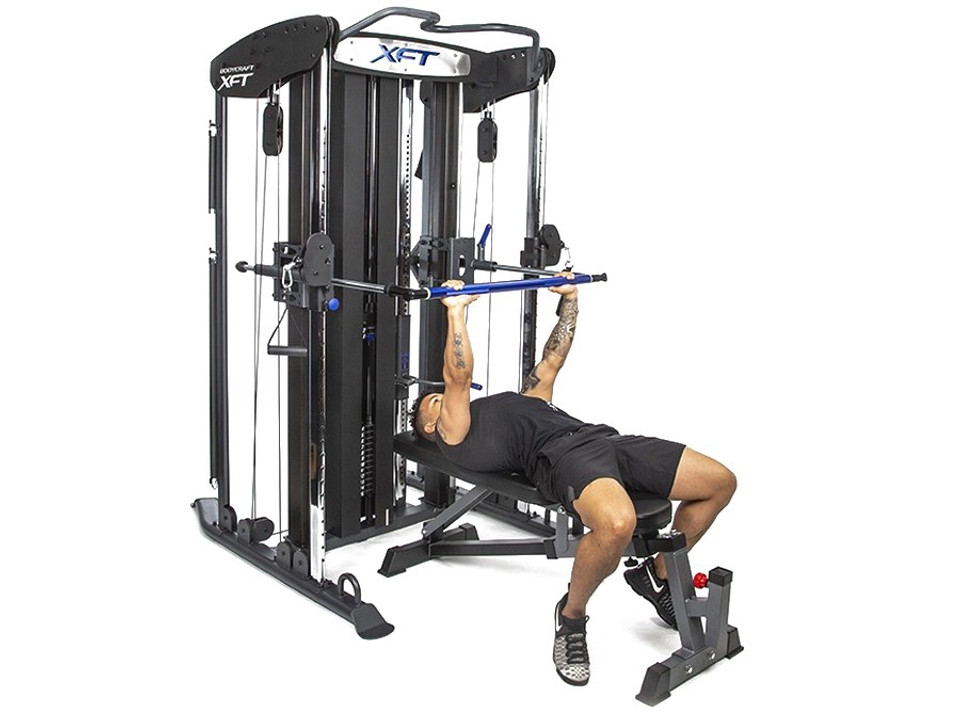Functional Trainer for Home Gym
Sitting all day wreaks havoc on our health, increasing the risk of chronic muscle and joint aches as we age, especially when hitting the gym daily after a hectic workday, isn’t an option due to varying reasons like commute, gym crowds, and wait times.
However, you still need a well-rounded exercise routine to train your muscles for flexibility, stability, and agility to prevent sudden injuries, strength loss, and muscle loss.
Luckily, the fitness industry has a solution for you despite all your constraints and exaggerated demands.
Functional Trainer is an all-purpose home gym equipment that replicates countless traditional gym exercises for a full-body workout. You no longer need to crave a gym-quality experience while working out at home!
Let’s explore more about it.
Functional Trainer for Your Home Gym
There are 5 basic movements of the human body that we use on a daily basis: push, pull, carry, squat, and lunge. As the saying goes— If you won’t use it, you’ll lose it— stagnant work hours will deteriorate our muscle strength, leading to frequent muscle cramps and injuries while doing everyday tasks (including sleep!)
However, functional trainers help you retain muscle strength by allowing you to perform functional training, attacking all 5 movements during a workout at home.
Functional trainers aren’t just for gym pros. Whether you are a beginner or a veteran in the fitness world, you can benefit your whole body at home with this one piece of home workout equipment. It allows you to target 90% of your skeletal muscles, boosting strength, muscle mass, balance, body tone and all.
It's basically a domesticated version of a bulky crossover cable machine. Despite its compact size, it allows you to do a comprehensive workout while leaving space for your dumbbells and squat table.
The reason behind its popularity is its resourcefulness. This one piece of home gym equipment does a bit of everything, offering a variety of exercises to keep your workout routine interesting. From squats to HIIT, low-impact exercises, and cardio, it's a versatile tool for individuals who need to work out daily but want variety to keep going.
Functional Trainer Exercises for Full-body WorkOut

Functional exercises involve mimicking movements of your daily activities, making it easier to perform everyday tasks. These compound movements also burn more calories than exercises focused on a single muscle, making them an efficient way to stay fit (both in looks & moves).
Using a functional trainer, you can perform exercises for your chest, back, legs, shoulders, and arms to keep your muscles functioning as they were designed to.
Here are a few exercises you can get started with using a functional trainer that relates to human movement patterns:
1. Chest Press (Push with Upper Body):
Ever had a cramp while pushing a heavy door open or pushing a cart in a grocery store? Chest press on a functional trainer helps you mimic this movement by pressing the cables forward from chest level.
2. Seated Compound Row (Pull with Upper Body):
Another everyday body movement involves pulling objects. Imagine pulling a heavy suitcase toward you or rowing a boat. You pull an object toward you using your back and arms in these activities. On a functional trainer, you replicate this by pulling the cables toward your torso while seated.
3. Machine Overhead Press (Push with Upper Body):
Storing stuff on high shelves is inevitable. I mean, who won’t utilize that space? Now imagine pushing a heavy object on those shelves to free up space. Can you do it without straining yourself? If not, then do the overhead press on a functional trainer. It mimics this action by pushing the cables upwards from shoulder height.
4. Lat Pulldown (Pull with Upper Body):
Lat pulldowns are a staple exercise for increasing back muscle mass and improving posture. Doing them on a functional trainer gives you a well-rounded upper body workout, improving your grip strength for daily activities like opening a jar!
5. Barbell Back Squat (Hinge and Squat):
In a barbell back squat, you hinge at your hips and bend your knees. A functional trainer doesn’t replicate this exact movement, but you can perform squats with added resistance using cables, and next time, picking up heavy parcels from the floor won’t make your back shriek with pain. This exercise also helps you comfortably sit down and stand up from a low chair.
6. Dumbbell Seated Overhead Press (Push with Upper Body):
This is like pushing a heavy object up from shoulder height, such as lifting a box onto a high shelf. On the functional trainer, you perform a similar motion by pressing the cables upward from a seated position.
Beginner’s Tip: Keep changing your exercises and resistance level to prevent workout plateaus.
Start with basic exercises like cable rows, squats, and chest presses. Once you have mastered the form and technique, you can opt for more intense workouts like circuit training or supersets to increase intensity.
Right Home Gym Functional Trainer for You
Investing in the right model makes as much difference as picking the right exercise. It's better to invest once in the best than to spend more on upgrades and maintenance of below-par equipment.
BodyCraft XFT Functional Trainer from The Fitness Outlet stands out as the best investment for home gym owners due to its easy installment plan, advanced features, space-saving design, and residential lifetime warranty. It’s hands down the best investment for those serious about functional workouts and strength training.
XFT has fused traditional barbell training with functional training. It’s equipped with dual front adjustable pulleys, a multi-grip chin-up bar, counterweighted quick-adjust carriage, and a 200LBS upgradeable weight stack, providing ample room for various exercises and resistance for different fitness levels.
Tip: Set up a functional trainer on a stable surface with enough room for movement to ensure safety and maximum workout options.
So why wait when precaution is better than cure and less expensive as well when it comes to health?

